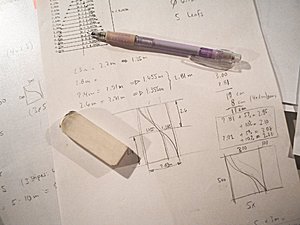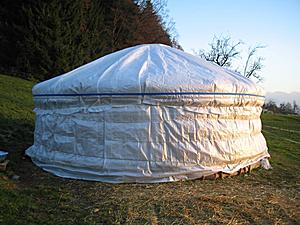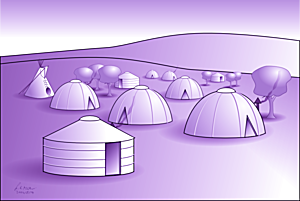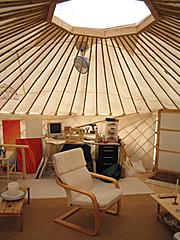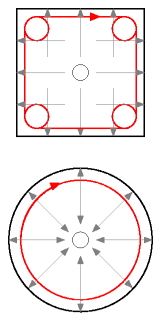
|
About
I try to document and share all information openly in order to inspire others, like you, to do alike things. I do believe by redoing things, like re-inventing the wheel if you want, new approaches are considered. It isn't really that all things are set for all time, no, sometimes we require to redo things we have become custom so much, like in case of housing, some things can be done better. What started as personal web-site, formerly known as "Housing, Dwelling & Shelters" (no longer reachable) I moved to SimplyDifferently.org finally, also a site I started which first dealt just to provide an overview on living in temporary shelters, but now also contains all my notes, online calculators - one place or web-site to find anything I gathered on temporary buildings the past years.
Temporary BuildingsHere in Switzerland, where I currently reside, the land is pricey and so is building houses; without mortgage from a bank almost nothing goes, and this isn't what I have in mind - additionally, planning and building houses are heavily (over)regulated too.Temporary buildings on the other hand aren't regulated here, and this means one can build and put up as I like as long I can take it down and is thereby considered temporary; and that circumstance really made me finally go ahead and do my own projects on temporary buildings.
In the summer 2005 I spent most of my time in the tipi (see my brief tipi diary), and while preparing an alike shelter for the winter 2005/2006 I finally decided to develop my own yurt (see my comprehensive yurt diary), and documenting my experiences made me start this website. Living in Temporary Buildings
Aside of the obvious well-being of living in a circular room, there is also the closeness to nature with temporary buildings, like in case of the tipi and yurt a true exciting experience, which can be only experienced first hand. The closeness to nature is immediate, and one has to deal with it. I consider this as an alternative and an advantage as I see it. Temporary buildings should not imply it's hard to live in such, quite the oposite, it is a luxury as I experienced it. Whereelse I have a circular room, with sight to the sky as with my yurt? And the experience having built it with my own hands is not replaceable.
Some of this passion of mine is expressed on my yurt diary, and of course this web-site is expression of it!
Rectangular vs Circular Space
Habitat architecture has predominantly focused on rectangular shaped spaces and rooms; and almost exclusively. This lack of option has made people, so I think, adapt and accept those rectangular spaces without questioning or even reconsidering alternatives. Rectangular shaped rooms have the advantage that its parts can be manufactured and built efficiently and economically as parts these days are mostly "rectangular" or "linear" based, whereas for round or circular rooms it requires more planning and consideration, and also a change of the mindset and thinking to adapt to circular and spherical space, e.g. using bows. Volume vs Surface Optimum
Taking in account that the optimum circumventing surface for a given space is a sphere or bubble, and is found throughout nature from micro-cosmos like cells up to macro-cosmos like entire planets, one is wondering why something as essential as living space doesn't orient itself on this shape?
The table on the left illustrates very well that the surface for a given volume is 24% larger for a cube than for a sphere. What significance has this? Heating primarly is depended on the surface, secondary on the volume; once a volume is heated, and fully insulated, there is no additional energy required anymore - but in real life the surface circumventing the volume there the heat energy is cooled down, actually leaves the system; so reducing the surface is reducing the amount of insulation and area where heat is cooling off.
Subtle Energy Flow / Esoteric Considerations
The outer space, such as living space, affects also the inner space, our well-being, our psyche and spirit. In circular space I experienced myself a new sense of peace and serenity, and I realized it was and is the shape. In traditional setup of the mongolian yurt the stove is placed in the center, I decided to leave the center free and it feels much better than have the center occupied, e.g. with metal or alike. If something is placed there it should represent the main theme or energy signature for the building and its habitants, e.g. a crystal, a candle or an altar can be such a source for a theme or energy signature. I personally positioned the candle and the crystals (rosequarz) aside, and keep the center indeed unoccupied, for now. Enjoy the site!
René K. Müller, March 2006 (Updated August 2006, July 2007)
Content:
|
| Home | · | About | · |  Tipi | · |  Yurt | · |  Dome | · | Features | · | Gallery |

Creative Commons (CC) BY-SA-NC 2005-2017, developed, designed and written by René K. Müller
Graphics & illustrations made with Inkscape, Tgif, Gimp, PovRay, GD.pm
Web-Site powered by FreeBSD & Debian/Linux - 100% Open Source


